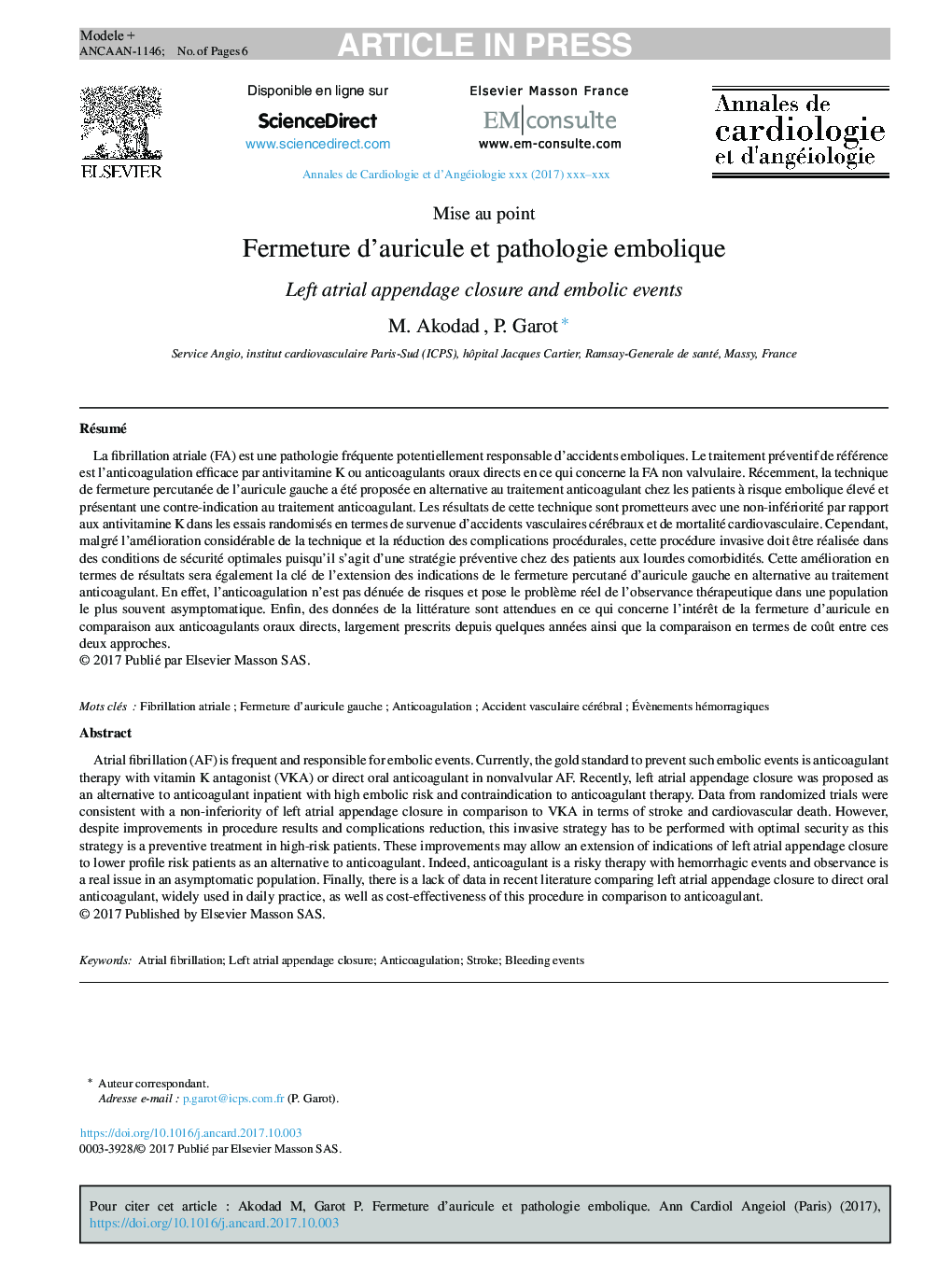| Article ID | Journal | Published Year | Pages | File Type |
|---|---|---|---|---|
| 8652303 | Annales de Cardiologie et d'Angéiologie | 2017 | 6 Pages |
Abstract
Atrial fibrillation (AF) is frequent and responsible for embolic events. Currently, the gold standard to prevent such embolic events is anticoagulant therapy with vitamin K antagonist (VKA) or direct oral anticoagulant in nonvalvular AF. Recently, left atrial appendage closure was proposed as an alternative to anticoagulant inpatient with high embolic risk and contraindication to anticoagulant therapy. Data from randomized trials were consistent with a non-inferiority of left atrial appendage closure in comparison to VKA in terms of stroke and cardiovascular death. However, despite improvements in procedure results and complications reduction, this invasive strategy has to be performed with optimal security as this strategy is a preventive treatment in high-risk patients. These improvements may allow an extension of indications of left atrial appendage closure to lower profile risk patients as an alternative to anticoagulant. Indeed, anticoagulant is a risky therapy with hemorrhagic events and observance is a real issue in an asymptomatic population. Finally, there is a lack of data in recent literature comparing left atrial appendage closure to direct oral anticoagulant, widely used in daily practice, as well as cost-effectiveness of this procedure in comparison to anticoagulant.
Keywords
Related Topics
Health Sciences
Medicine and Dentistry
Cardiology and Cardiovascular Medicine
Authors
M. Akodad, P. Garot,
